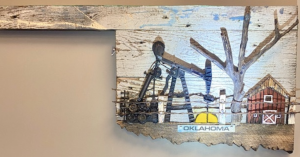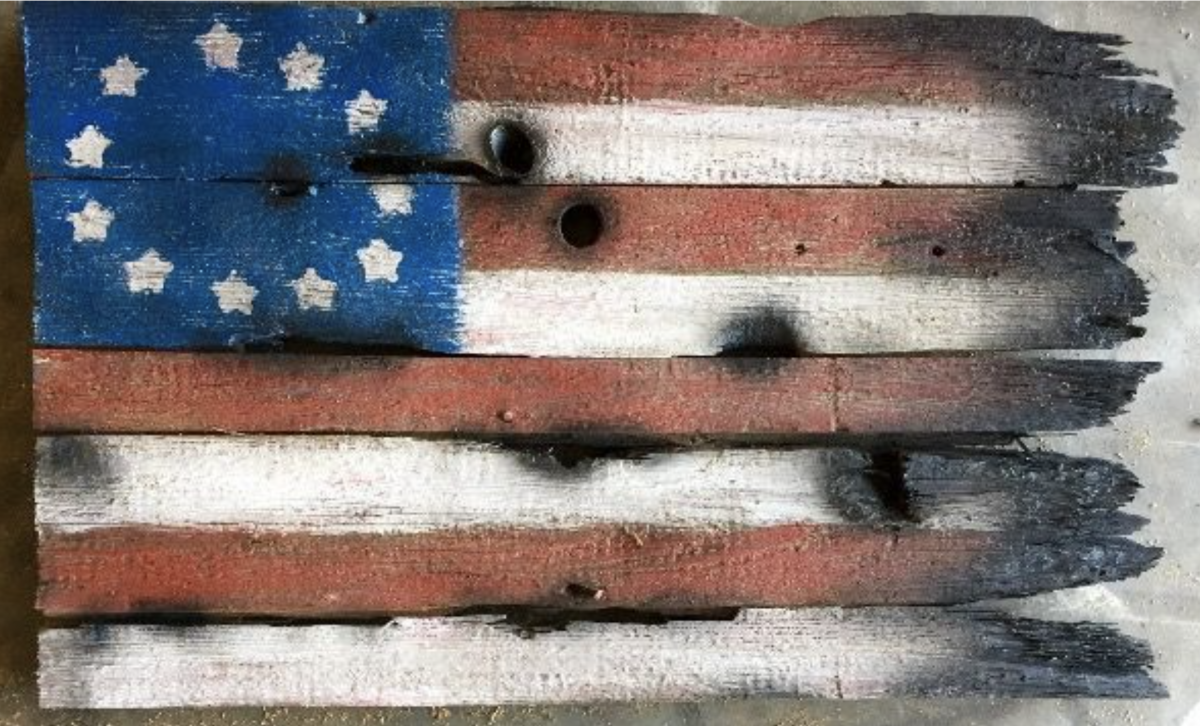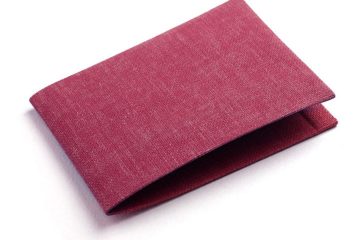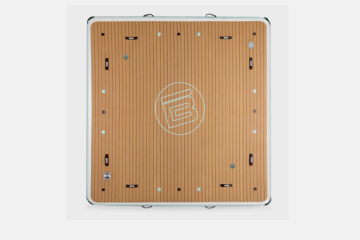Contents
- CREATING UNIQUE, INTERESTING WOODWORKING PROJECTS THAT SELL
- Should you get into woodworking?
- How hard is it to learn woodworking?
- 9 Tips for Woodworking for Beginners
- Here’s what you need to begin building your woodworking tool collection.
- Where to look for material
- Benefits or disadvantages of woodworking
- Think outside the box. Make your items your own with your signature touch and look
- Other ways you can create Art
- Conclusion
CREATING UNIQUE, INTERESTING WOODWORKING PROJECTS THAT SELL
By Ty Crane
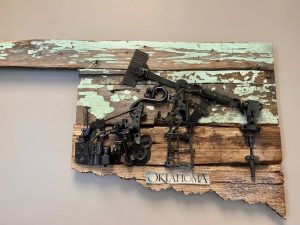
It’s one thing to create woodworking projects; however, a true master combines his talent with interesting, unique woodworking projects. In this article, I will discuss my woodworking experience, show projects from start to finish I’ve made over the years, and will tell you what tools and materials are needed to get started. I will also share ideas on where and what to look for material that could be potentially free. If you are a creative thinker and can visualize the item you want to make that’s fantastic! But if you need help and ways to approach your art in a different way, I will share the tactics I use and discuss some ways to help you to think outside the box so you can produce original, unique art. The one thing is there are a lot of people looking for something unique and different while purchasing art. Something they desire and on a more personal level is what they crave from my experience. People want something different than what both their neighbors have that they bought from Hobby Lobby. Everyone might have different tastes in art but making a wide range of different items in your portfolio is the way to go in my opinion. The most ironic thing about myself is I never had woodworking or art experience, (except woodshop and art in grade school) and I’m not even a fan of art, but it’s just a knack I picked up on a fluke. So, the way I started out was actually getting boards off a barn to cover my walls. After that, I saw the value of barn wood and sold it on craigslist by the board foot. My sister brought the idea to my attention to make wall décor because she always thought I had a creative approach and unique way to visualize things growing up. So, I saw barn wood art on Etsy, Pinterest and eBay, and what it was selling for and thought, I could easily do this, and started the next day. So, let’s begin:
Should you get into woodworking?
 There are many great reasons to get into woodworking. It’s fun and could be a very profitable hobby and It’s also a valuable skill that could lead to many other possibilities, either financially or just something to bring out your creativity to better yourself. Also, getting started with woodworking doesn’t have to be expensive if you know what to shop or look for. You can make many items that you will be proud of and become knowledgeable to start building items instead of making large purchases. I tried to make furniture at the start but it got very tedious, hard to sell and storage was an issue, so I just stuck with wall décor. Doing art shows can be fun and you get to meet a lot of people at art shows and its exciting making sales and getting feedback on your items. Of course, you will run into hagglers that will try to lowball you but that’s just
There are many great reasons to get into woodworking. It’s fun and could be a very profitable hobby and It’s also a valuable skill that could lead to many other possibilities, either financially or just something to bring out your creativity to better yourself. Also, getting started with woodworking doesn’t have to be expensive if you know what to shop or look for. You can make many items that you will be proud of and become knowledgeable to start building items instead of making large purchases. I tried to make furniture at the start but it got very tedious, hard to sell and storage was an issue, so I just stuck with wall décor. Doing art shows can be fun and you get to meet a lot of people at art shows and its exciting making sales and getting feedback on your items. Of course, you will run into hagglers that will try to lowball you but that’s just 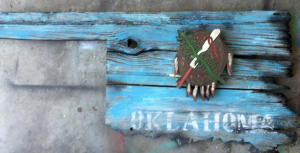 sales, so don’t sell cheap or get discouraged because someone will buy it for your asking price. Ignore negative comments like someone saying, “I could easily make this but don’t have the time.” You will deal with people like this. But if you use your creativity and always explore outside of your realm to produce one-of-a-kind items you will either enjoy it, or not. So it’s time for a new hobby like metal detecting or fishing.
sales, so don’t sell cheap or get discouraged because someone will buy it for your asking price. Ignore negative comments like someone saying, “I could easily make this but don’t have the time.” You will deal with people like this. But if you use your creativity and always explore outside of your realm to produce one-of-a-kind items you will either enjoy it, or not. So it’s time for a new hobby like metal detecting or fishing.
How hard is it to learn woodworking?
Woodworking isn’t hard to learn, unless you’re not capable of using tools or producing desired art, but it takes hard work to find what works best for you and finding your own signature style. Create something that’s on a personal level and one of a kind and I’d say that’s the reason why I’ve been so successful over the years. If you are passionate about constructing projects, you’ll leap over any barrier in your path to produce high quality and exceptional artwork. But in order for success, remember these five things you must possess to be successful: Motivation, passion, patience, preciseness, and perseverance. If you lack some of these traits then there will be a high chance of failure.
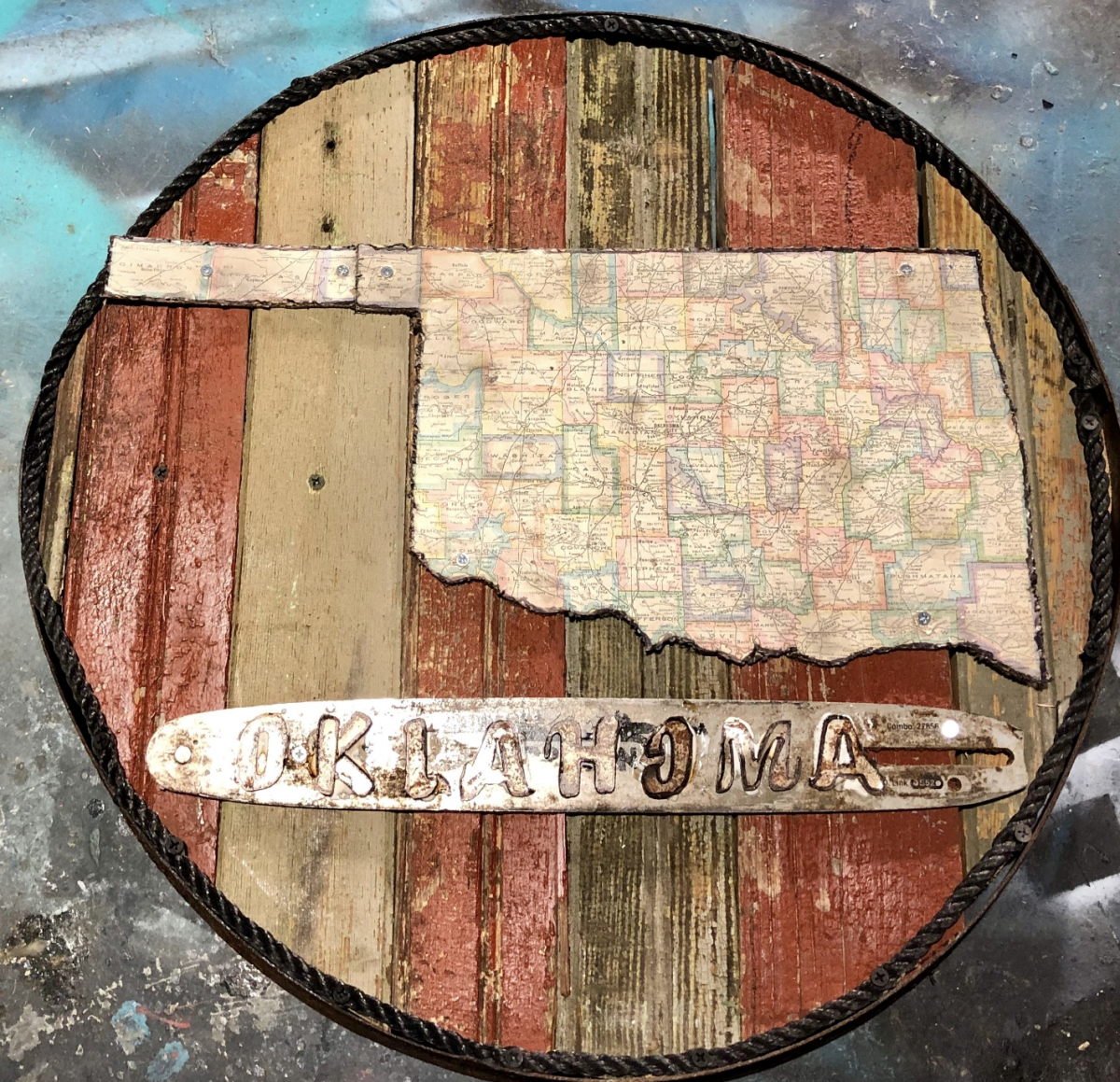
9 Tips for Woodworking for Beginners
- Create a simple woodworking setup or work bench
- Learn how to use a few essential tools
- Learn how to read a tape measure even though I always eyeball my cuts
- Sand your wood. I usually just wash the boards or use a grinder.
- Understand lumber dimensions and wood type. Oak can be very hard to cut, especially barn wood.
- Try to always use straight wood boards that are not rotted. If there is rot, I usually use my grinder to shave it down.
- Be very careful!! Using a jigsaw can be tricky sometimes depending on the wood and texture. It’s easy to miss seeing a nail that could have been broken off and if you hit that nail your jigsaw might jump up and could possibly cut you.
- Use gloves and eyewear. Splinters and wood shavings are un-predictable so always use caution. I hit a nail and it jumped up and cut my fingernail. Almost needed stitches. Another time it did the same thing but got my wrist. I put some superglue on it and patched it up.
- Select the right tools. Don’t go cheap.
The drill’s I’ve used for years are DeWalt 20 volt that you can buy as a set. These are highly recommended and perfect for high impact drilling.
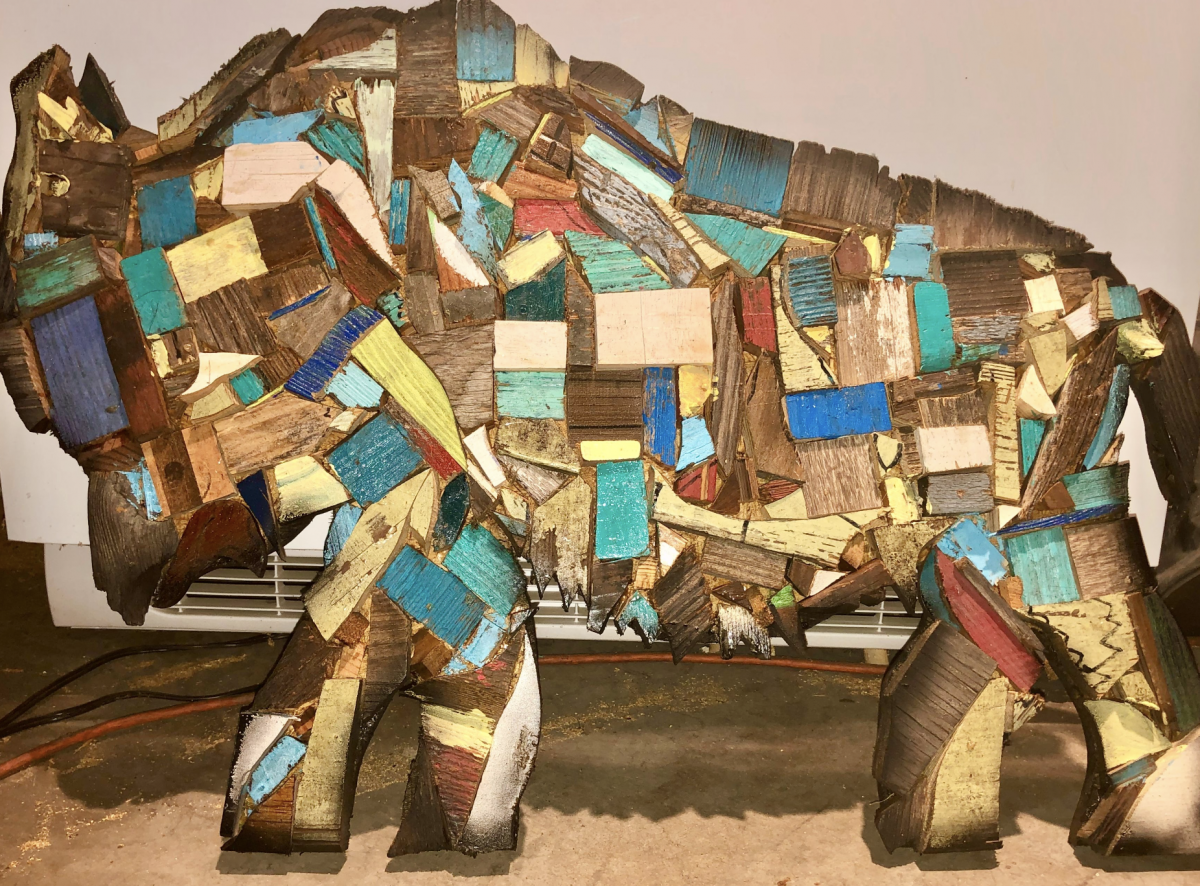
Here’s what you need to begin building your woodworking tool collection.
- Jigsaw. Every beginning woodworker needs to invest in a decent jigsaw. Cheap jigsaws crap out on you fast:
- Table Saw, even though I haven’t used on in years:
- Hammer or crowbar:
- Woodworking clamps
- Power Drill
- Circular Saw. If there’s one power-activated saw belonging in every beginner’s box, it’s a circular saw. …
- Blowtorch depending on the style you’re aiming for. I used one for skylines or on the end of a wooden flag making it look distressed or old.


- Grinder. I grind wood to make it look more distressed and worn out for detail
Here is the angle grinder I use, and it works great.
Where to look for material
- Craigslist. They post items for free, and I always keep an eye out.
- Drive around and look for burn piles. Knock on the door and ask them if you can haul it away. The worst thing that could happen is they would say no.
- Look for fallen barns or houses and locate the property owner. Don’t just think they are abandoned and cherry pick. That’s called trespassing and stealing.
- Dumpsters. Expect to get dirty if you want to find material that’s useful.
- Garage Sales. Look for toolboxes and other items that you could implement into your art spending maybe a couple bucks.
- Flea Markets. There is plenty of cheap miscellaneous material you can get that’s cheap.
- Ask Grandpa if he wants to get rid of old items in the shed. Keep your material cost low at all costs to generate the most income possible.
For this buffalo, I used late 1800’s depot station wood torn down. It has a lot of character and uniqueness to it. Probably my favorite buffalo I’ve made.

These are a few of Tulsa skylines I created. One has overlapping buildings and I drew lines and painted some that reflect the real look of buildings in Tulsa. Another picture I used a blow torch for the black Tulsa skyline.






Benefits or disadvantages of woodworking
Woodworking and movement might have an effect of heart health. Now it can lower stress and help you unwind but, on the downside, it also promotes more movement of your body and contingent on if you have heart issues, this might not be a hobby to pick up. Nails piercing or scrapping you and splinters are going to happen. It can be very difficult to pull nails out of old barn wood but if you can come across it, get it. It has a beautiful character and detail that makes for great artwork. It might get tedious at points throughout your projects, but the reward is worth the patience in the end.
For these items below, I went to a local tag agency, and they give me license plates for free. Some of the older license plates I either got from family members or bought off Ebay or flea markets.
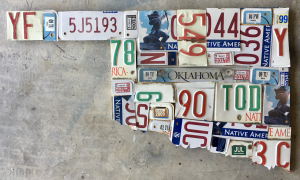
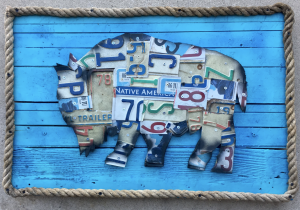
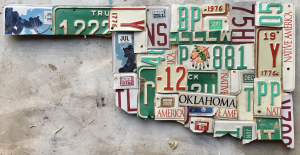
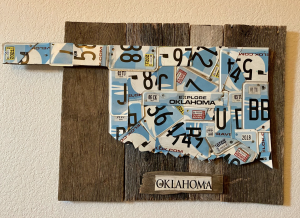
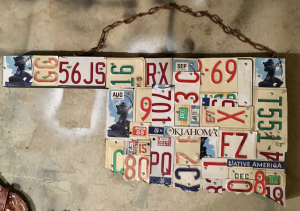
Think outside the box. Make your items your own with your signature touch and look
In the style of items I produce, I personally prefer using a jigsaw instead of a table saw making straight cuts because I want my items to look more rustic and not manufactured. I am not a fan, or the cliché look and challenge myself to make every item different and unique in its own way. I use a DeWalt 20V max jigsaw and they are easy to use and very accurate.



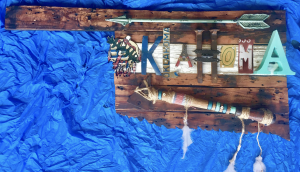



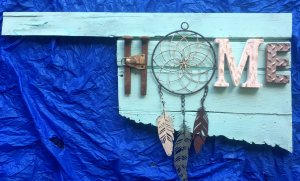
Other ways you can create Art
I metal detect and a majority of the items on this buffalo I found in the ground and cleaned up. I have also found items at flea markets, around barns, or even on the side of the road. I do not know how to weld so this is basically tacked down with screws and maybe some wood glue. This is how I progressed and started thinking of other ways to create art without using any wood after a couple years and it has certainly paid off.





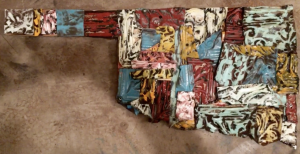
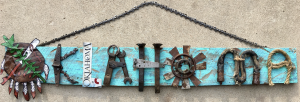
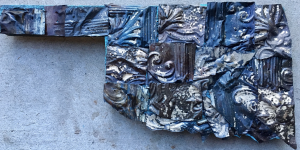
Another example is these oil rigs and barns I made. It has a 3-D look to it and has been an easy item to sell at local shows because so many people work in the oil and gas industry and put it in their office and barns, windmills, and barbed-wire fences are everywhere in be seen in Oklahoma. I add barbed wire fences at the bottom for more appeal and detail for a realistic portrait of actual barns and windmills I cut by hand. Anything I can add to make the project pop I will incorporate because again, people want something different.
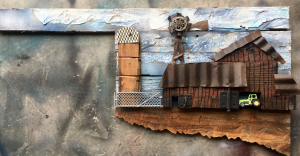

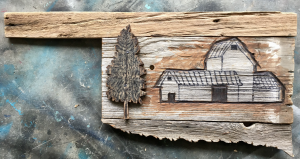



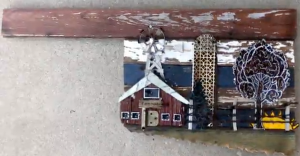
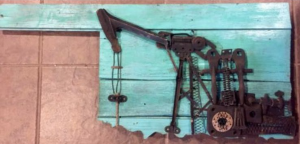
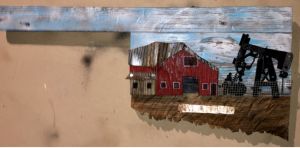
Here is an example of an item I started from scratch and completed. I chose to right color of boards. Found metal objects and spray painted them black then went off a picture to duplicate an oil rig. The sun is an actual street sign, so it reflects giving the appearance of a real sun in the right lighting condition. I cut out a barn and added the details with a sharpie and used tin off an old barn for the roof. Then I added the barbed wire fence and a piece of a tree limb that looked like a rotted old tree for more appeal. Then I coat it with lacquer to seal it up.
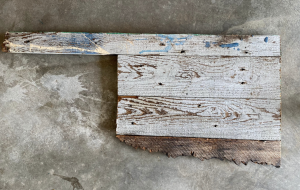
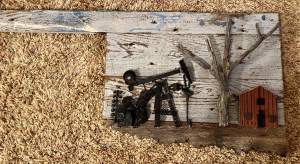
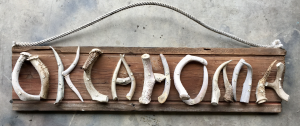
In this project I distressed this map and used a sander to give it a worn look and wrinkled it for a more authentic look. I then framed it with old barn wood to make it look like a real, very old map.

I also used some of my old cowboy boots and cut them up to make this buffalo.


Conclusion
Developing your own style and thinking outside the box is how I was able to become successful. Keep your profit margin high by finding materials for free or cheap like I explained. Use miscellaneous items anyway you can create something unique and desirable. Learn your tools and always be careful using safety equipment. Have fun and meet new people while doing local shows. Have patience and master your technique. And always remember these five things you must possess to be successful: Motivation, passion, patience, preciseness, and perseverance. I hope my tools and thought process of thinking differently approaching your art and will help you achieve your goals if you’re getting started woodworking or looking to create something different. Have fun, be careful while using your tools and THINK OUTSIDE THE BOX.
